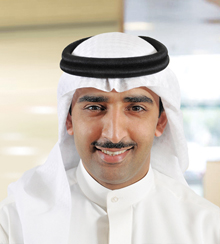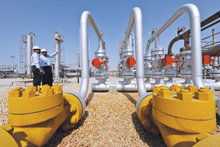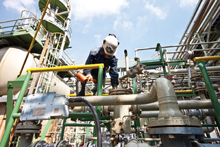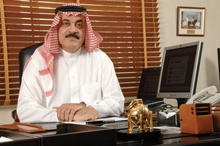
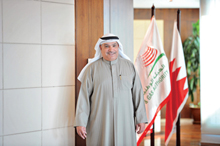 Al Sharyan ... stepping up investments
Al Sharyan ... stepping up investments
THE National Oil and Gas Authority (Noga) of Bahrain has completed a study to restructure the current gas pricing and develop a new appropriate policy for the kingdom to enable a manageable move toward a market-related pricing structure, says Noga general secretary Dr Ahmed Ali Al Sharyan.
“It should be noted that Noga has been implementing since 2007 a programme of measured gradual increases in gas pricing. Noga has also worked closely with the United Nations Development Programme (UNDP) along with the Electricity and Water Authority (EWA) on a study to assess the feasibility of setting up a national energy conservation centre,” he says in an exclusive interview with OGN.
Work on establishment of this centre is under way. Noga has embarked on a number of other initiatives to enhance the oil and gas resources such as exploration and development of oil and gas in offshore blocks. Also, Noga has awarded Occidental a production sharing agreement to explore and develop the ‘Pre Khuff Deep Gas’.
Also the present gas supply in the kingdom is not tight as current development programmes can fulfil all gas supply commitments until 2024 without any contribution from any deep gas project, he says. “Therefore, Noga will pursue the exploration of deep tight gas in a very orderly manner. Three exploratory wells will be drilled during the next two to three years to assess the potential of this important geological section. The exploration phase will be followed by a well-designed development phase to realise optimum gas production targets,” he says.
Excerpts from the interview:
Bahrain’s Prime Minister HRH Prince Khalifa bin Salman Al Khalifa has recently highlighted the need to increase investments in the oil and gas sector. How do you plan to step up investments and also boost research in the fields of production and export?
Since oil was discovered in the Kingdom of Bahrain, the oil and gas sector has always played an important role in the local economy and over the years, the government managed to use oil revenues to improve the local infrastructure. Today, although around 80 per cent of the government revenue comes from the oil and gas sector, the National Economic Vision 2030 calls for a shift away from dependence on oil towards a knowledge-based economy shaped by the government and driven by a pioneering private sector.
This entails additional investments in the oil and gas sector to fuel economic growth and provide the funds for the development of other sectors of the economy. These investments will primarily be made in the upstream for the exploration and development of the oil and gas fields followed by investments in refining and petrochemicals. For instance, the following projects are currently on the oil and gas investment portfolio of the kingdom:
• Bahrain Field Development;
• Deep Gas Exploration;
• Bapco Modernisation Programme (refinery expansion);
• A-B Pipelines Replacement;
• GPIC Expansion;
• LNG Import Terminal;
• Security Enhancements;
• Solar Energy; and
• Other projects.
After a challenging year for oil production in Bahrain in 2012, 2013 was expected to deliver both an output rise and an investment spike for the upstream sectors. How far have these materialised?
Increasing oil production from old fields is always challenging. This also applies to the Bahrain field which was discovered in 1932. However, the advancements made in technology and enhanced oil recovery techniques over the last decade have made it possible to increase oil production and recoverable reserves.
As the Bahrain field is a mature field, it had experienced many years of production decline before Bahrain Field Phased Development initiative started and, therefore, one of the main challenges we faced during 2010 was to stop and then reverse oil production decline in a safe and responsible manner. Ever since, oil production has been continually rising every year. For instance, the average daily oil production level in 2013 was around 6 per cent increase over that in 2012, which was a direct result of a boost in investments made.
Given its limited hydrocarbon resources, what are Bahrain’s plans to further diversify its energy supply sources?
The National Oil and Gas Authority’s (Noga) vision is to fuel economic growth and improve living standards. The authority aims to achieve this by providing fuel/energy required for existence and development of manufacturing, power generation, water treatment, and other industries; and by providing the necessary funds to fuel the development of other industries and sectors of the economy, which leads to the realisation of the kingdom’s aspiration of diversifying the economy.
Therefore, securing sustained supply of oil and gas to meet existing and future energy requirements is considered one of the most crucial objectives of the authority. As a result, Noga has started a major campaign to explore and produce additional oil and gas. Accordingly, exploration and production sharing agreements (EPSA) have been signed with major international oil companies to tap into additional reserves. For example, we have signed an EPSA with Occidental, US to tap into the sub-Khuff reservoir (deep gas) to produce additional gas. This campaign is not limited to indigenous reserves as initiatives are under way to import crude oil and gas from other countries. Simultaneously, Noga is actively looking into alternative sources of energy such as solar energy and bio-fuels.
The strategies developed aim to achieve the following objectives:
• Fulfil the kingdom’s continually growing demand for energy;
• Create a hub for skilled manpower and experience in oil and gas related business;
• Diversify and grow oil and gas related business; and
• Achieve operational excellence
KPMG recently suggested that as western companies are now divesting their mid-stream assets and investing in science and technology development and other areas, Bahraini companies can start acquiring assets in North America and the west. Will this be a strategy worth considering for Bahrain in the near future?
The Oil and Gas Holding Company (nogaholding) is the investment and business development arm of The National Oil and Gas Authority (Noga). According to its memorandum of incorporation and articles of association, one of the company’s main objectives is to “Establish and participate in the establishment of new ventures or companies and sell any such ventures, companies or its interests therein within or outside Bahrain” and as such, nogaholding’s future investments will have no legal geographic boundaries.
However, the short to medium investment plan is to invest within the kingdom to enhance the infrastructure, create job opportunities and stimulate economic growth. This is clearly evidenced by the various ongoing, imminent and future projects. Having said this, nogaholding will continue to monitor and assess potential investments abroad to capitalise on profitable opportunities at the right time.
The Bahrain Economic Development board had recently said the country plans to invest $15 billion in the oil and gas sector over the next 30 years as it aims to increase its oil production to 100,000 barrels per day (bpd) before the end of 2020. Where will all these investments go?
The initial Master Development Plan (MDP) that was proposed by the contractor party for the phased development project of the Bahrain Field oil and gas reservoirs during the term of the Agreement from 2009 till 2029 was estimated to cost around $15 billion. This estimate assumes that all pilot projects will be successful and full field applications would be pursued. The estimated investment will be used to carry out many development programmes. Among them are the following:
• Drill oil and gas wells to increase production;
• Drill wells to inject gas, steam and water for enhancing oil recovery;
• Build oil and gas facilities to handle the increased oil and gas production;
• Build the necessary gas compression facilities to increase the non-associated gas production and reserves;
• Build the necessary facilities to manage the associated water and gas production;
• Implement programmes to clean the associated water and to stop all gas flaring and venting to safeguard the environment; and
• Design and implement projects to:
* Develop the heavy oil resources of the Cretaceous section;
* Steam flood the high oil saturation of the gas cap; and
* Screen and pilot and implement the appropriate EOR technologies for increasing the recovery from the tight carbonate reservoirs.
 |
|
The Noga team ... (from left) Abul-Hussein |
What is progress on the 350,000-bpd-capacity oil pipeline between Bahrain and Saudi Arabia? How much will the pipeline cost as per current estimates?
This is an infrastructure related project that is estimated to cost $350 million. The scope of the A-B Pipeline Project is to replace, reroute and increase the capacity of the existing three crude oil pipelines extending over 115 km from 230,000 bpd to 350,000 bpd operating capacity and 400,000 bpd design capacity, using a single large-size pipeline that will extend from Aramco Abqaiq plant to Bahrain refinery. The existing pipelines extend from Aramco, Dhahran to Bahrain refinery, two of which were commissioned in 1940s and the third one was commissioned in 1970s.
The project is progressing well and on schedule. So far, the new pipeline route has been approved, the survey of the landing point area on Bahraini side has been approved, Environmental Health Impact Assessment (EHIA) for Bahrain on-shore completed and the Front End Engineering Design (Feed) study has been completed.
It is expected to award the engineering, procurement and construction (EPC) contract by the late first quarter of 2014 or early second quarter of 2014. Moreover, the mechanical completion is planned for the second quarter of 2018.
What is the current status of Bahrain’s deep gas exploration programme?
In preparation for exploring the potential of deep gas in the Bahrain field, Occidental has carried out all necessary geological and geophysical studies in collaboration with leading consulting firms and laboratories. The contractor has also completed the deep wells design studies and the fracturing and stimulation programmes.
We have procured long lead drilling materials and well services, finalised and signed the agreement on the drilling rig. The first well will be spudded in July 2014.
What is your evaluation of over four years of Tatweer Petroleum’s efforts to raise hydrocarbon production in the kingdom? What targets have it achieved so far?
Tatweer Petroleum commenced the phased development of the Bahrain Field reservoirs in early 2010 and has succeeded so far to raise the oil production from 32,000 bpd to around 50,000 bpd and non-associated gas production capacity from 1970 in 2009 to around 2,500 million cubic feet of gas per day in 2013.
Tatweer Petroleum is currently conducting and assessing a number of pilot and expanded EOR projects to determine the production targets of the various reservoirs. The assessment of the results of the pilot and the expanded EOR projects will most likely be completed in 2015. Therefore, it is premature at this time to forecast the production targets of the oil reservoirs.
What are the key features of the Energy Efficiency Programme launched by Bahrain in association with the World Bank?
The key features of the Energy Efficiency Programme launched by Bahrain in association with the World Bank are: provision of a “hands on” immediate response for implementing a set of energy efficiency targets; creation of intervention priorities and enablers; designing stakeholder awareness; capacity building; and performance monitoring with a focus on global best practices consistent with conditions in Bahrain.
The fast-track energy efficiency interventions include an initial awareness campaign about the importance of labelling that seeks to increase consumers knowledge of the meaning of energy efficiency (EE) labelling schemes which targets buyers and retailers. Building codes will be developed for residential and commercial buildings in line with ASHRAE Standards 90.1 and 90.2. These will be the basis for developing Bahrain’s “Green Building Code” that will address a wider spectrum of sustainability factors for buildings during design, construction and operation.
The fast-track interventions will also consider the feasibility of smart meter installation for public buildings and large consumers together with the phasing out of electro-mechanical meters and the roll-out of smart meters across different consuming sectors. The World Bank will also review the potential for increasing street light energy efficiency through the installation of LED/solar street lights on all new streets and highways.
In parallel with the fast-track interventions, the Ministry of Finance and the World Bank will develop the kingdom Energy Efficiency Programme (Keep), which will describe government strategy to implement energy efficiency interventions, draft required policies and regulations, institutional models (public vs private), financial instruments and required incentives. It will include capacity building as well as a communication plan.
In view of the tightness of gas supplies in the kingdom, do you plan to drill more for tight gas?
The gas supply in the kingdom is not tight as current development programmes can fulfil all gas supply commitments until 2024 without any contribution from the deep gas project. Therefore, Noga will pursue the exploration of deep tight gas in a very orderly manner. Three exploratory wells will be drilled during the next two to three years to assess the potential of this important geological section. The exploration phase will be followed by a well-designed development phase to realise optimum gas production targets.
With conventional energy resources getting scarce, what plans have been put in place to ensure rational and optimum use of energy?
To address the energy sector challenges in Bahrain, a number of initiatives have been adopted to achieve optimum use of energy. Noga has completed a study to restructure the current gas pricing and develop a new appropriate policy for the kingdom to enable a manageable move toward a market-related pricing structure.
 |
|
Bapco ... refinery modernisation in full swing |
It should be noted that Noga has been implementing since 2007 a programme of measured gradual increases in gas pricing. Noga has also worked closely with UNDP along with Electricity and EWA on a study to assess the feasibility of setting up a national energy conservation centre.
Work on establishment of this centre is under way. Noga has embarked on a number of other initiatives to enhance the oil and gas resources such as exploration and development of oil and gas in offshore blocks.
In view of the huge investments going into the Bapco refinery modernisation plan, what are your plans to keep the refinery competitive in the coming years?
Bapco Refinery Modernisation Programme (BMP) is historically the largest project since the refinery was built and it aims to enhance competitiveness and profitability of the company and to continue contribution to the local economy. The programme includes several initiatives such as:
• Refining capacity increase from 260,000 bpd to 360,000 bpd;
• Energy efficiency improvement;
• Product yield improvement and fuel oil production reduction;
• Increase gasoline production;
• Naphtha to petrochemicals upgrade; and
• Meeting international environmental standards.
BMP follows Bapco’s low sulphur diesel project (LSDP), which was also part of the strategy to position the company well in a competitive diesel market. The project was commissioned in 2007 and involved building new facilities and revamping existing ones to meet diesel pool specifications down to 10 ppm sulphur. The scope of the project included the following:
• A new hydrocracker to process up to 60,000 mbpd of HVGO, producing distillates with 10 wppm S diesel;
• Revamp of the existing mild hydrocracker to a diesel hydrotreater to produce a 10 wppm S diesel product equivalent to Euro V specifications;
• A new hydrogen production unit; and
• New sulphur recovery facilities.
Close on the heels of UAE, where there is a policy shift towards inclusion of more renewables in the energy mix, will Bahrain also lay more stress on green energy?
Bahrain has always been keen on diversifying sources of energy. In 2012, Noga and Bapco initiated a project with Petra Solar, a US-based technology company focused on providing smart energy solutions, and Caspian Energy Holdings, for a 5 MW distributed smart solar energy pilot project in Awali, the refinery and the University of Bahrain.
The project, which is to be completed in Q1 2014, demonstrates Bahrain’s commitment to solving the challenges of energy security and climate change through global partnerships. Noga has in the past conducted a study with a Japanese company to measure the wind speed potential in the country and the results have been encouraging.
EWA is also contemplating the establishment of a 5 MW wind and solar station.



















































































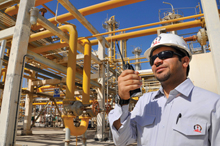
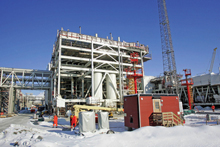

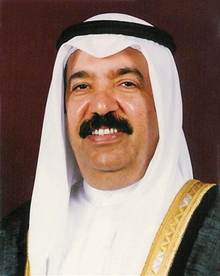
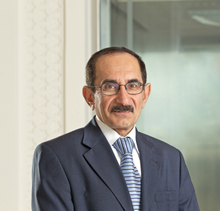
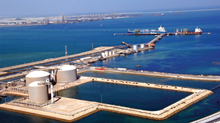
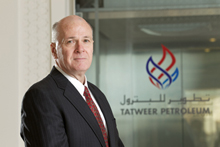
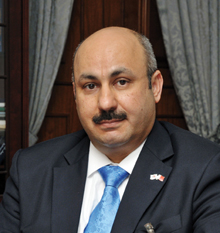
.jpg)
